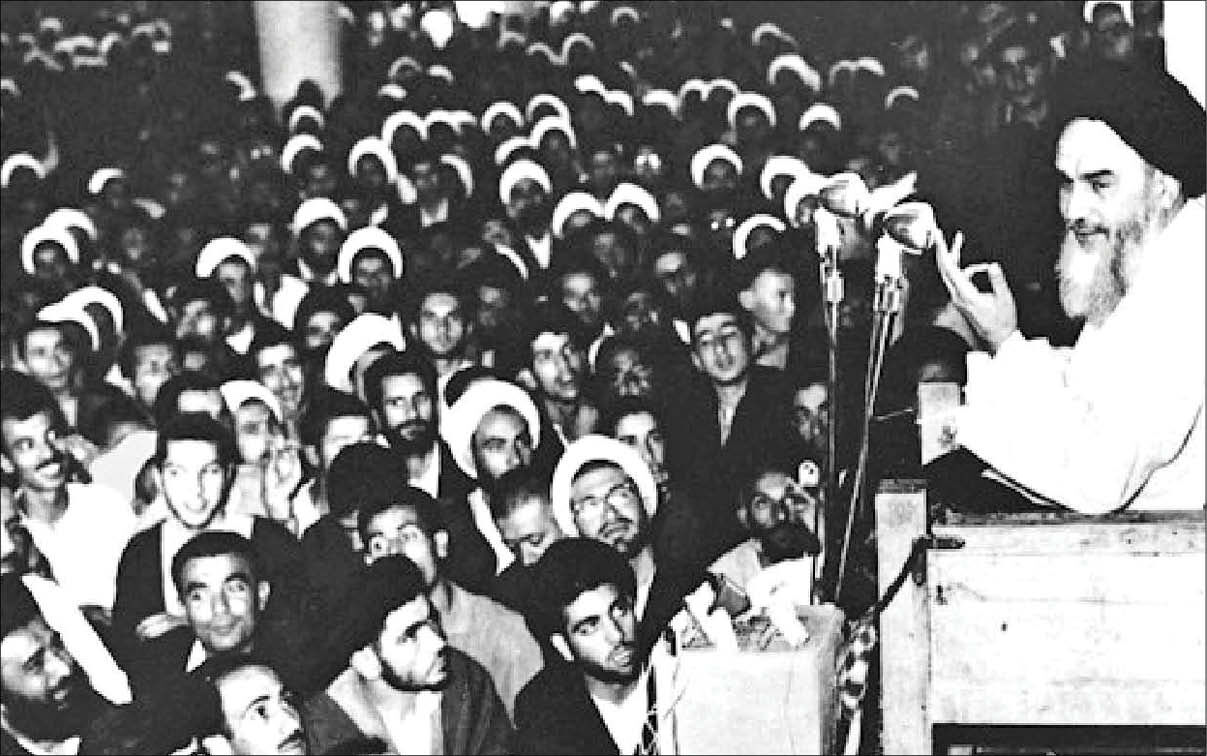Faizieh’s Bloody School Tragedy
In the evening of March 22, 1963, on the occasion of the martyrdom of Imam Sadiq (pbuh), a mourning assembly was held on behalf of Ayatollah Golpayegani, at the Feizieh School in Qom. In the middle of the speech, regime agents attacked the crowd. At the same time, anti-riot forces threw a number of seminarians from rooftops to the ground. The chambers were emptied and books and belongings were burned and a large number of seminarians were beaten. The next day, this behavior continued far from humanity, and they destroyed parts of the school and prevented people from entering Feizieh.
Imam Khomeini’s Speech in Ashura in 1963
On May 12, 1963, Imam Khomeini, in a message addressed to Muslims in Iran and the world, and on the occasion of the 40th anniversary of the martyrs of Faizieh, revealed various aspects of the regime’s crimes. By any means, he expressed the atrocities carried out by the regime.
In the evening of Ashura, in accordance with June 13, 1963, Imam Khomeini went to Faizieh School to deliver a speech. Many people gathered around Faiziyah and in the courtyard of the shrine of Hazrat Masuma (pbuh).
In the presence of clerics, seminarians, qom residents and pilgrims of the Shrine of Hazrat Fatima Masuma (PBUH), Imam Khomeini said: “The Shah and Israel are the basis of the nation’s plight”:
“Israel does not want a scientist to exist in this country, Israel does not want the Qur’an to exist in this country, Israel does not want the religious scholars to be in this country, Israel does not want the precepts of Islam to be in this country. Israel slammed the school at the hands of its black agents. They beat us, you beat the nation. It wants to take over your economy, It wants to destroy your agriculture and your business, It wants to have no wealth in this country, It has the wealth to take over in his own hands. These things that hinder (it), the things that are the barriers, break these dams.”
The Imam’s speech marked the pillars of the Shah’s reign and his relationship with Israel and the Baha’i faith.
The movements and street demonstrations of people in Qom and Tehran manifested themselves in the form of mourning processions in Muharram. The Shah found that the movement of these waves was in the hands of the Imam, so he had to remove him in order to cope with the situation, unaware that his absence would also wage an uprising, the bloody uprising of June 15.
Imam’s Arrest on June 5, 1963
At midnight, Muharram 12 coincided with June 5 (Khordad 15), 1963, when SAVAK agents brutally raided the Imam’s house in Qom and arrested imam.
The sun emerged on June 5, 1963, when news of imam’s arrest wrapped up everywhere in the country. Qom, Tehran, Varamin, Tehran, Mashhad, Tabriz and Shiraz are witnessing mass protests.
The protests of the people take the form of rebellion, and on the main streets of Tehran and Qom, the flood of crowds is uncontrollable, and it is the fire that opens to them and falls on the ground like a leaf of autumn, even though they try to defend themselves with sticks and stones.
Demonstrations continued that day and two days later, with thousands of people killed and injured. The most heinous incident was the massacre of the shrouded peasants of Varamini who had made their way to Tehran in support of the Imam.
Military officers confronted them in Sarpol-e Baqerabad and massacred people with heavy weapons.
In his memoirs, Timsar Hossein Fardoust uncovers the use of the experiences and cooperation of the most skilled U.S. political and security agents to suppress the June 5 uprising, as well as the flurry of Mohammad Reza Shah, the court, the army and the SAVAK during these hours, and Amir Asadollah Alam, the Prime Minister, writes in his memoirs: If we had retreated, unrest would have spread to four corners of Iran and our regime would have collapsed with disgraceful surrender.
The Common Slogan of the Protesters of June 5 (Khordad 15)
The bloody uprising of (Khordad 15), 1963 should be considered a spontaneous move, because its participants pursued a goal regardless of age, occupation, and group affiliation, and had no predetermined plan, but the behavior of the Pahlavi regime and the Enlightenments of the Imam had informed the people, and now with his arrest, people’s anger erupted and the foundations of Mohammad Reza’s reign were shaken, Although the Shah of Iran may have apparently been able to extinguish the flames of popular anger, it was actually under the gray fire that became the origin of the 1979 Revolution.
Imam Khomeini’s Speech on the Khordad 15 Uprising
According to Imam Khomeini’s order, the Khordad 15 uprising marked a turning point in the country’s history and was a starting point for the Islamic Revolution movement. For this reason, we can say that Imam Khomeini played an important role in the cohesion of popular protests by referring in various speeches to the bloody uprising of Khordad 15.
With Imam Khomeini’s efforts and the various speeches and messages he delivered, the anniversary of the 15 Khordad (the June 5) uprising became a source of fear for the Pahlavi regime. Later, in another speech, Imam (a) declared June 5 as a public mourning forever. Regarding the Khordad 15 uprising, he said: “Khordad 15th, while it was a tragedy, was blessed for the nation, which led to a great cause and that independence of the country and freedom for the whole country.”
jamaran.ir


